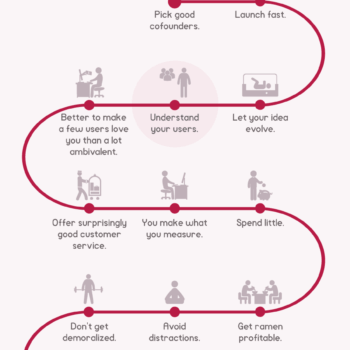Looking ahead into 2017, it’s important to not only be on top of new trends in the business world, but to incorporate them. Adopting trends is important for small business owners and entrepreneurs to be able to compete with big companies. You’re at an advantage because you can change your practices quicker than a large organization. Here’s what you can expect of small business trends in 2017:
1. Experts will be driving sales, not order-takers or salespeople
With widespread Internet access, consumers are now seeking out experts’ opinions before making a purchase. Gone are the days of trusting in-store salespeople to provide details on product performance or longevity.
Consumers are looking for experts who can provide information based on their personal experience and their professional opinion without being pushy to make the sale. Experts allow for greater customer experiences, providing deeper connections on relevant topics, increased trust and a superior identification of needs.
2. Crowdfunding over venture capital
This isn’t just for crazy ideas and millennials. Crowdfunding for startups is beginning to take off in the business world as companies begin to recognize its value. Not only are you raising money, the people who support you are validating your ideas and products before you put money into them.
Opening up about the products or services you want to offer can also lead to traction in your community, opening up a line of two-way communication between you and customers, and engaging them to provide feedback. If you’re looking to get started, or just curious, check out Kickstarter and Indiegogo for inspiration.
3. Customer interest will be harder to capture
This is the age of information overload. With the entire Internet in the palms of our hands and constant emails flooding in, more commonplace marketing techniques are becoming obsolete. This means traditional email marketing blasts to all your subscribers just won’t generate as much interest as they have in the past.
Try to personalize their experiences. Look to social media to open up a dialogue with consumers and share more interesting content like videos, which are proven to hold attention longer than other media. Listening to someone speak about the risks and challenges they may face with your product also seems a lot more friendly and unique than a generalized FAQ post.
4. Personalization is the new mass market
If you’re going to the doctor, you want a diagnosis that is right for all of the symptoms you have, not based on what the majority has, right? Think of your marketing and sales efforts in the same way. With more messages coming from other sources than ever before, it’s important to capture people’s attention for longer.
For example, Netflix and Amazon’s success is made from personalized offers and suggestions based on your history. Get to know your customers by tracking their shopping habits and create personalized marketing materials based on large segments of people who follow similar trends (i.e. shop on weekends).
5. Brick and mortar stores are losing their lustre
Retail isn’t just becoming crowded – it’s moving. Mall-style browsing is done with a mouse and keyboard, as outlets like Amazon provide such a large variety of products they could never all be offered in one store. You just can’t compete with that scale as a small business. As a result, the stores that stay alive are now highly specialized and provide excellent customer service.
Think about what you do better than everyone else in your community and focus on it so customers think of you as soon as they need that product or service. Plus, make sure you’re online so your customers can find you while Googling what they need. Get online and add your business to 411.ca for free.
6. Recurring revenue
Major companies are going with a new pricing model and it’s likely here to stay. Instead of offering products at a fixed price, these large organizations are offering services for a recurring fee. Monthly Netflix subscriptions have replaced movie rentals and purchases, Apple Music and Spotify have replaced iTunes and CDs, and Amazon Prime is replacing express shipping fees and other types of media. There’s a reason for this.
Recurring revenues with a high renewal rate are more efficient in maintaining customers. This saves costs as it’s way more expensive to bring in new customers than it is to keep existing ones. You can also keep your finger on the pulse of the market. Look at when and why people are signing up or leaving month after month. If possible, look for ways to turn your business into a recurring revenue generating service, like offering unlimited tool rentals in a month for a flat fee. It’ll lead to greater profits in the long run based on current industry trends.
When looking ahead, keep these emerging business trends in mind. If you can, find ways to incorporate them into your business plan. Although they may just be taking off this year, they’re primed to stick around for the foreseeable future.
_______________________________________________
About the Author
This article was written by Michael Ozburn of 411.ca, a platform dedicated to insights and tools to help businesses with big ideas— but limited budgets— market their products and services and reach their target audience. Michael graduated with a Bachelor of Commerce Degree from Queen’s University. He’s obsessed with everything marketing and devoted to helping entrepreneurs everywhere thrive.





























